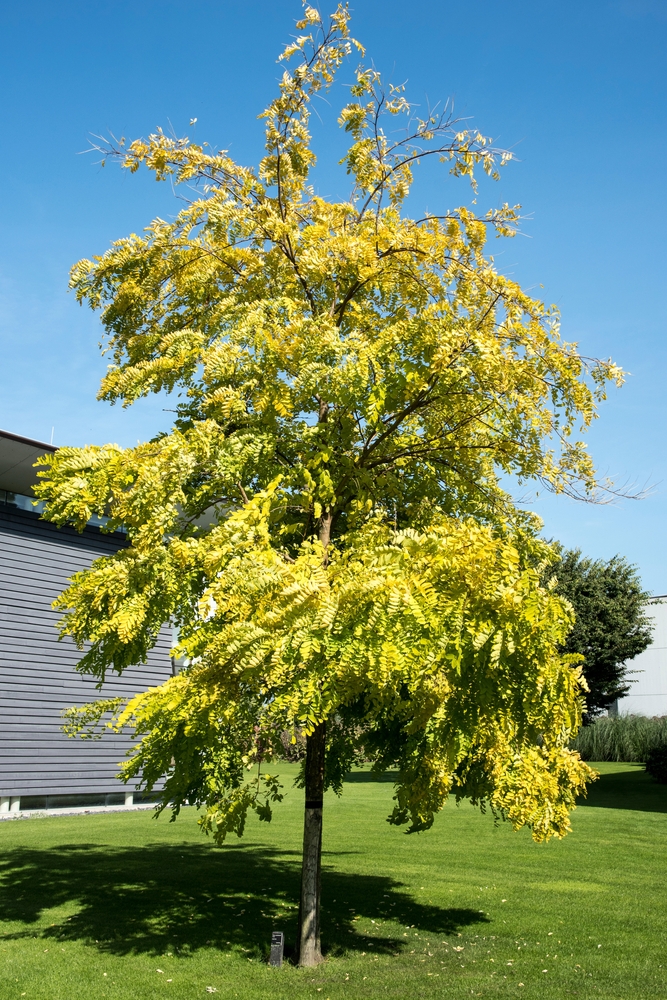False Acacia or Black Locust
Latin Name : Robinia pseudoacacia
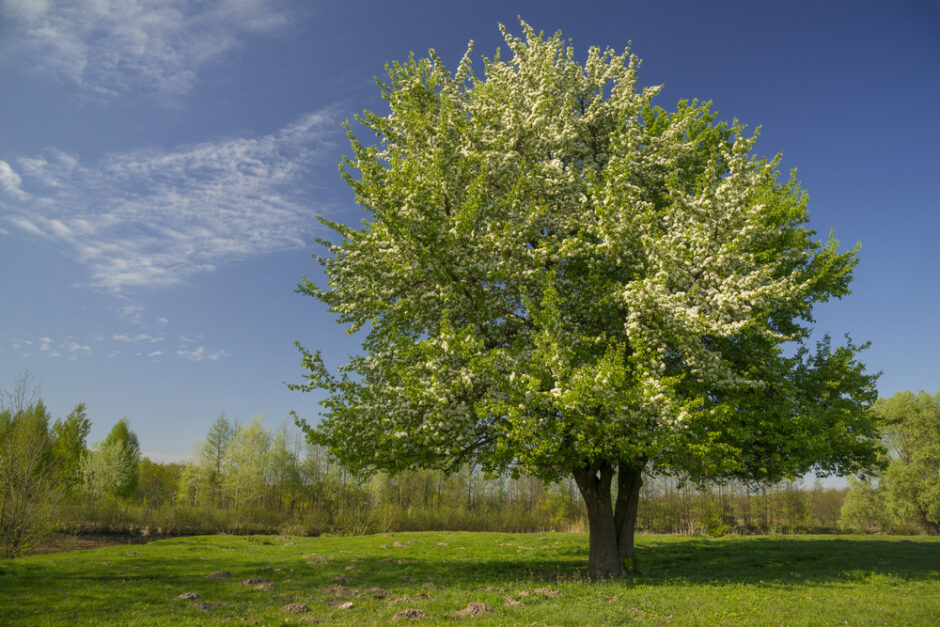
Makes a very large tree
The Black Locust or False Acacia or Common Acacia, makes quite a large tree. It is a native tree of the Eastern States of the USA and was introduced to France in the early 17th Centuary, and then on to us at some point.
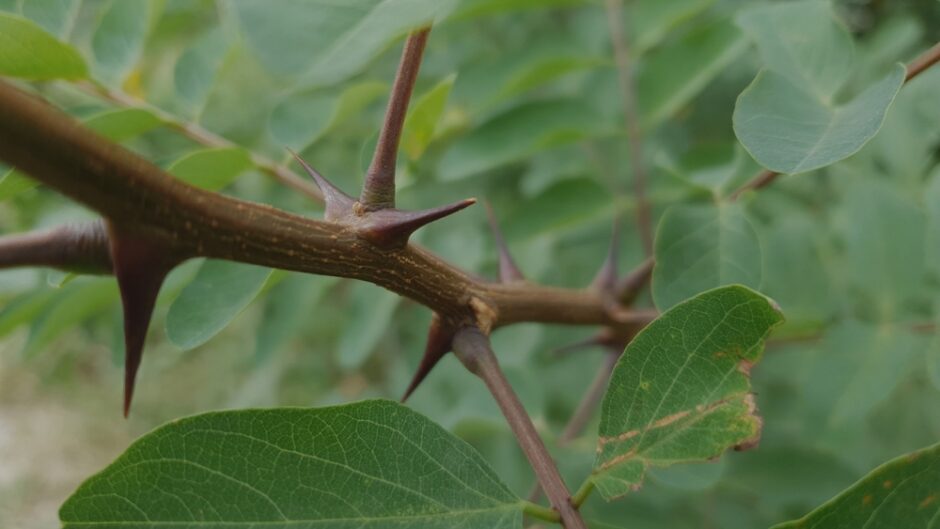
….. with seriously sharp thorns
To say that it has thorns is to seriously understate the definition of the word ‘Thorn’. This tree has the mother of all thorns, and as any Tree Surgeon will tell you, they are no respecter of gloves.
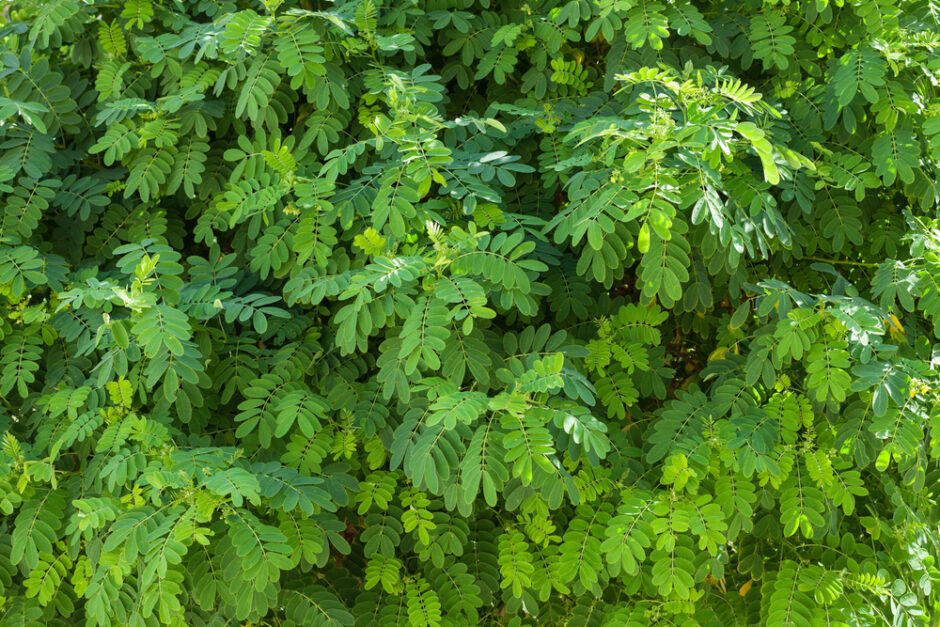
Summer Foliage
The summer foliage of this tree is a lush green, to say the least. Being a member of the Pea Family of plants – Leguminosae – it has a leaf with multiple oval leaflets set either side of a central stalk, known as a Pinnate Leaf. These then fade to yellow in autumn before finally falling.
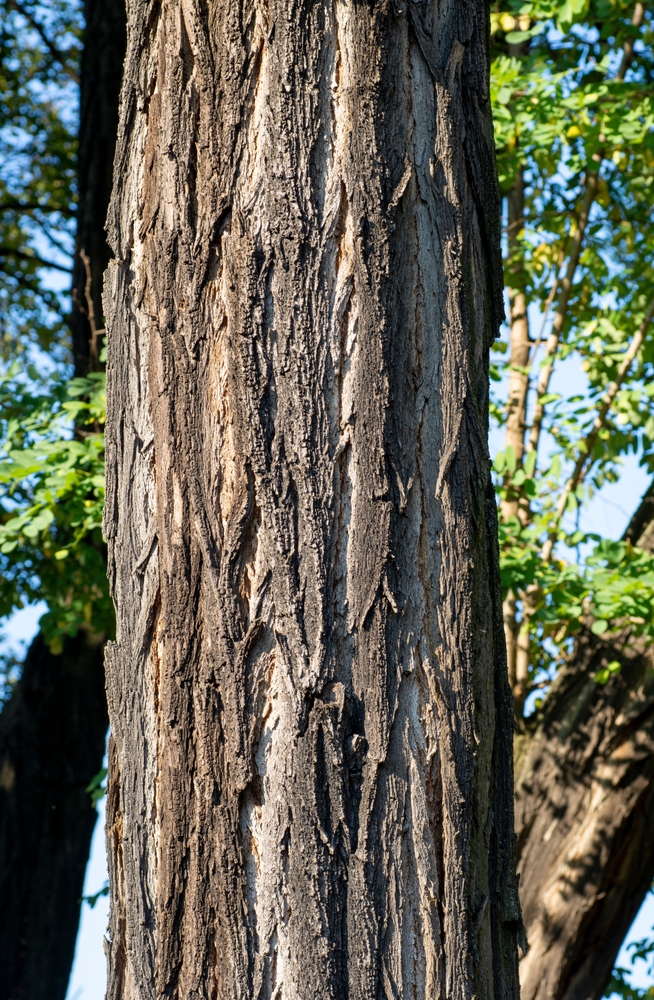
Typical bark
Quite rugged in appearance, with deep fissures in the trunk, this tree has quite brittle characteristics, and small branches snap quite easily.
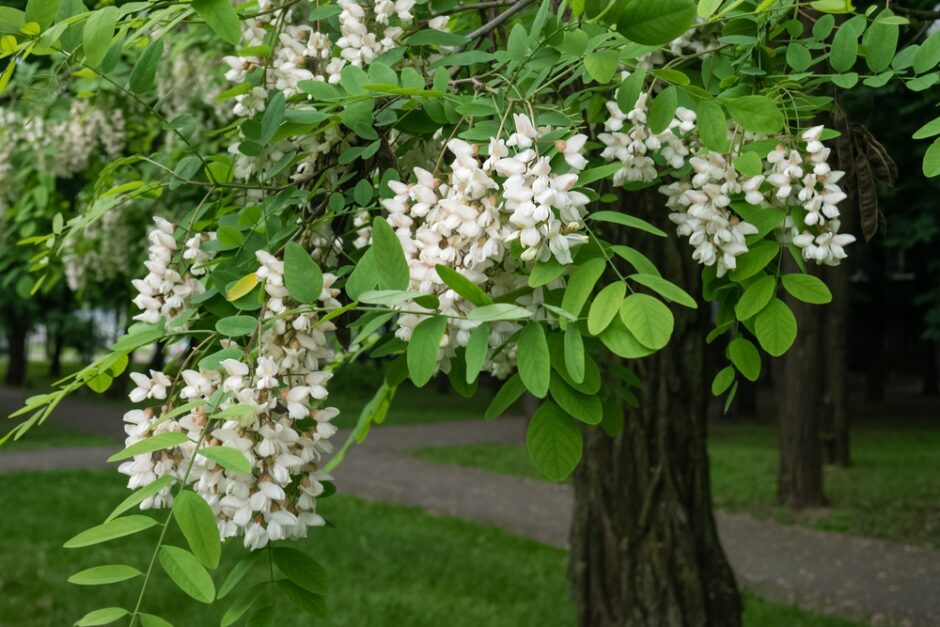
Pea-Like Flowers
The slightly fragrant flowers are produced in racemes which hang down when formed generally in June, and make quite a show.
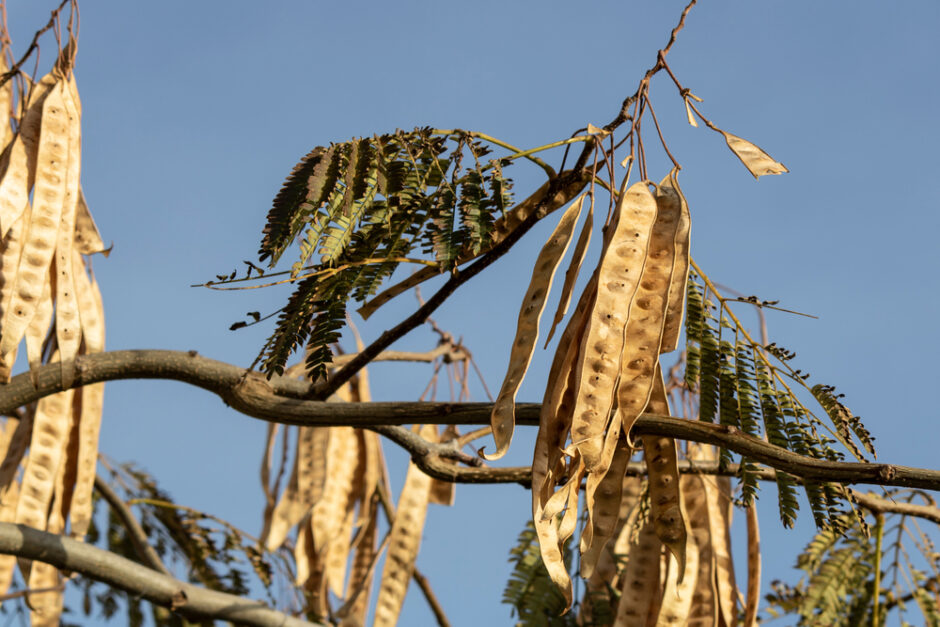
Ripened Seed Pods
And the purpose of it all is to reproduce, so here are the typical Leguminosae seed pods to complete the annual cycle of life.
